The Role of ABA Therapy in Supporting Classroom Transitions
Navigating School Transitions with ABA Therapy
Understanding the Importance of Classroom Transitions
Classroom transitions can pose significant challenges for children with autism, impacting their ability to navigate daily routines and focus on learning. Applied Behavior Analysis (ABA) therapy offers a structured approach to support these transitions, providing children with the tools they need to succeed in a school environment. This article explores how ABA therapy prepares students for smooth transitions, enhances classroom success, and manages transition-related challenges.
Introduction to ABA Therapy and Its Role in Transitions
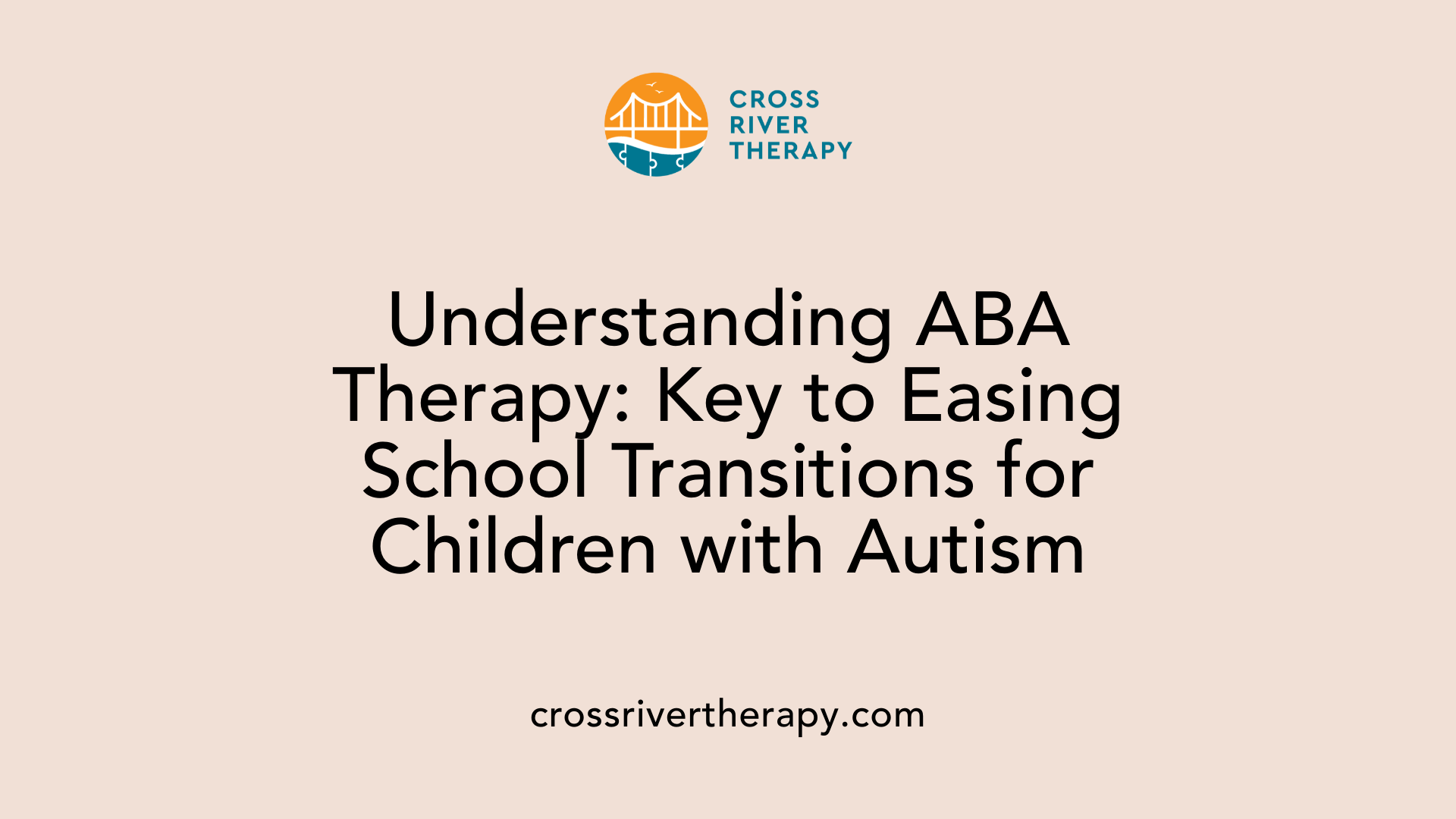
What is Applied Behavior Analysis (ABA) therapy and how does it support children, especially those with autism, during classroom transitions?
Applied Behavior Analysis (ABA) therapy is a structured and evidence-based approach that applies the principles of behavior science to encourage positive behavioral changes. For children with autism spectrum disorder (ASD), transitioning into a school environment can be particularly challenging due to shifts from familiar routines to new stimuli. This transition often increases anxiety, making it crucial for support strategies to be in place.
ABA therapy addresses these challenges through several effective strategies. By utilizing tools like visual schedules, countdown timers, and gentle warnings, children are prepared for changes in their activities. This promotes a sense of predictability and reduces anxiety related to transitions.
In addition, practicing these transitions in calm settings helps build confidence and enhances functional communication skills. This prepares children not only to express their needs more clearly but also to handle new environments with ease.
Moreover, ABA professionals collaborate closely with educators to create individualized transition plans that consider children's needs. By implementing tailored strategies, they ensure that children can navigate classroom transitions more smoothly, ultimately fostering a supportive learning atmosphere and enhancing academic success.
Transition Strategies That Support Effective Movement
Transition strategies are integral in helping students with autism move effectively between different activities throughout their school day. Research shows that up to 25% of a school day can involve transitions, which might often be a source of stress for these students. This necessitates the incorporation of specific ABA techniques to minimize disruption and anxiety.
The Schedules, Tools, and Activities for Transitions (STAT) Program exemplifies a structured method for aiding teachers in this regard. By providing clear procedural steps, educators can implement these strategies to support autistic students effectively, allowing them to thrive in both academic and social contexts.
Recognizing Individual Needs
Recognizing that each child’s requirements are unique is paramount. Transition planning should involve assessing the specific transitions that may be difficult for a student and developing corresponding goals that are SMART (Specific, Measurable, Achievable, Relevant, Time-bound). Building upon ABA techniques like functional communication training enables children to express themselves better, making for more effective support during these crucial times of change.
In conclusion, implementing ABA therapy principles within school transitions not only facilitates smoother adjustments but also enhances academic engagement, reinforcing the importance of collaboration between therapy teams and educational staff.
Strategic Methods in ABA Therapy
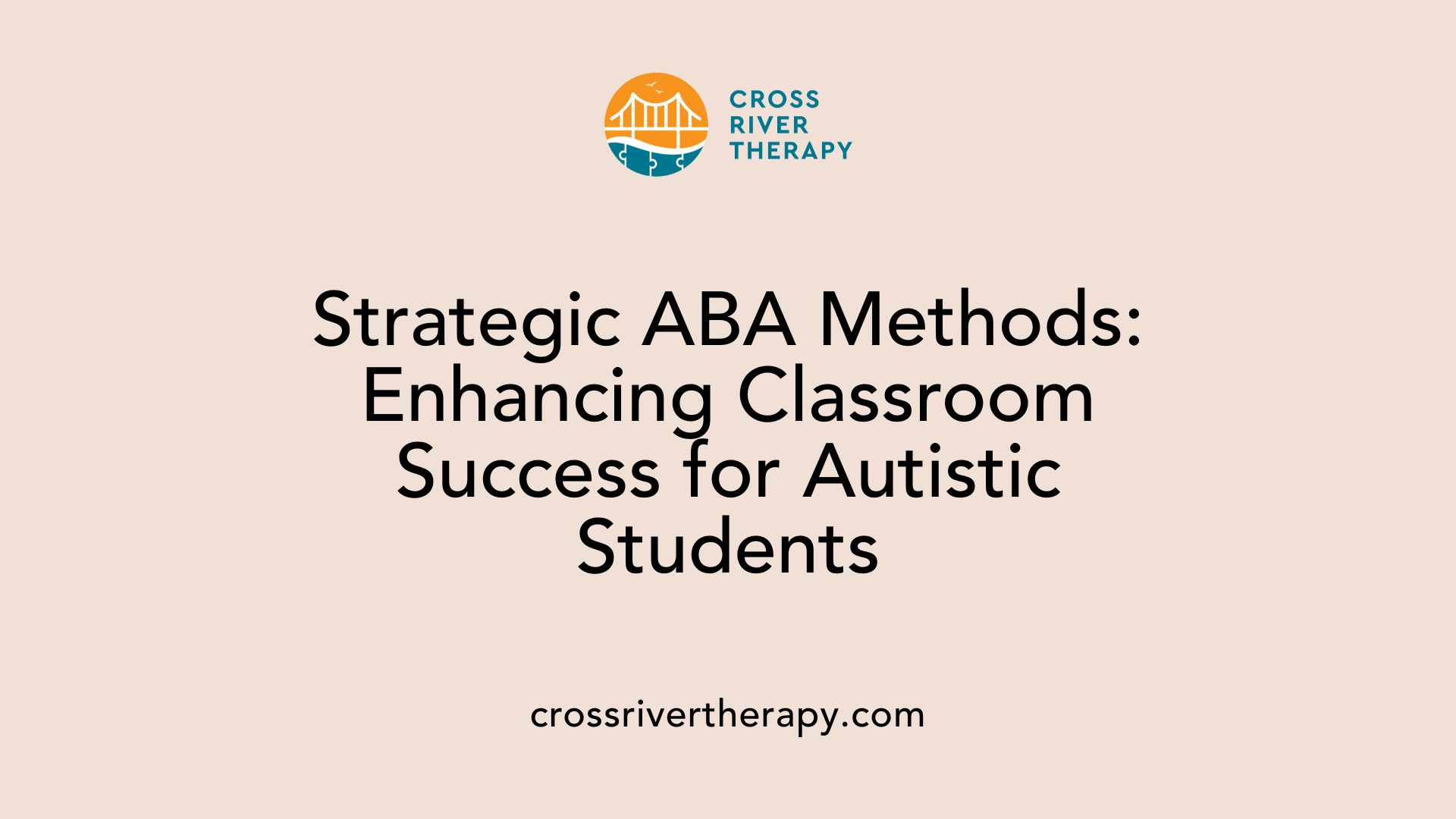
What strategies and methods are used in ABA therapy to enhance classroom success for students with autism?
ABA therapy employs a range of strategies tailored to support classroom success for students with autism. One foundational approach involves discrete trial training, which breaks down tasks into small, manageable steps, helping students learn gradually in a structured manner.
Another effective method is natural environment teaching. This approach leverages spontaneous teaching opportunities in everyday settings, allowing children to apply skills in real-world contexts, which enhances their learning experience.
Key strategies include:
- Positive Reinforcement: Rewarding desired behaviors encourages repetition and fosters essential skills such as communication and social interactions.
- Clear Routines and Expectations: Establishing predictable routines reduces anxiety, enabling students to better navigate daily schedules.
- Individualized Approaches: Each child's unique needs are considered, making customized strategies essential for effective learning.
To further support classroom engagement, fostering positive peer relationships through group activities can be instrumental. Additionally, creating sensory-friendly environments caters to students' sensory needs, helping them maintain focus and engagement.
Overall, these strategic methods create a structured and supportive classroom atmosphere, promoting not only academic achievement but also improved social skills among students with autism.
Best Practices for Transition Support
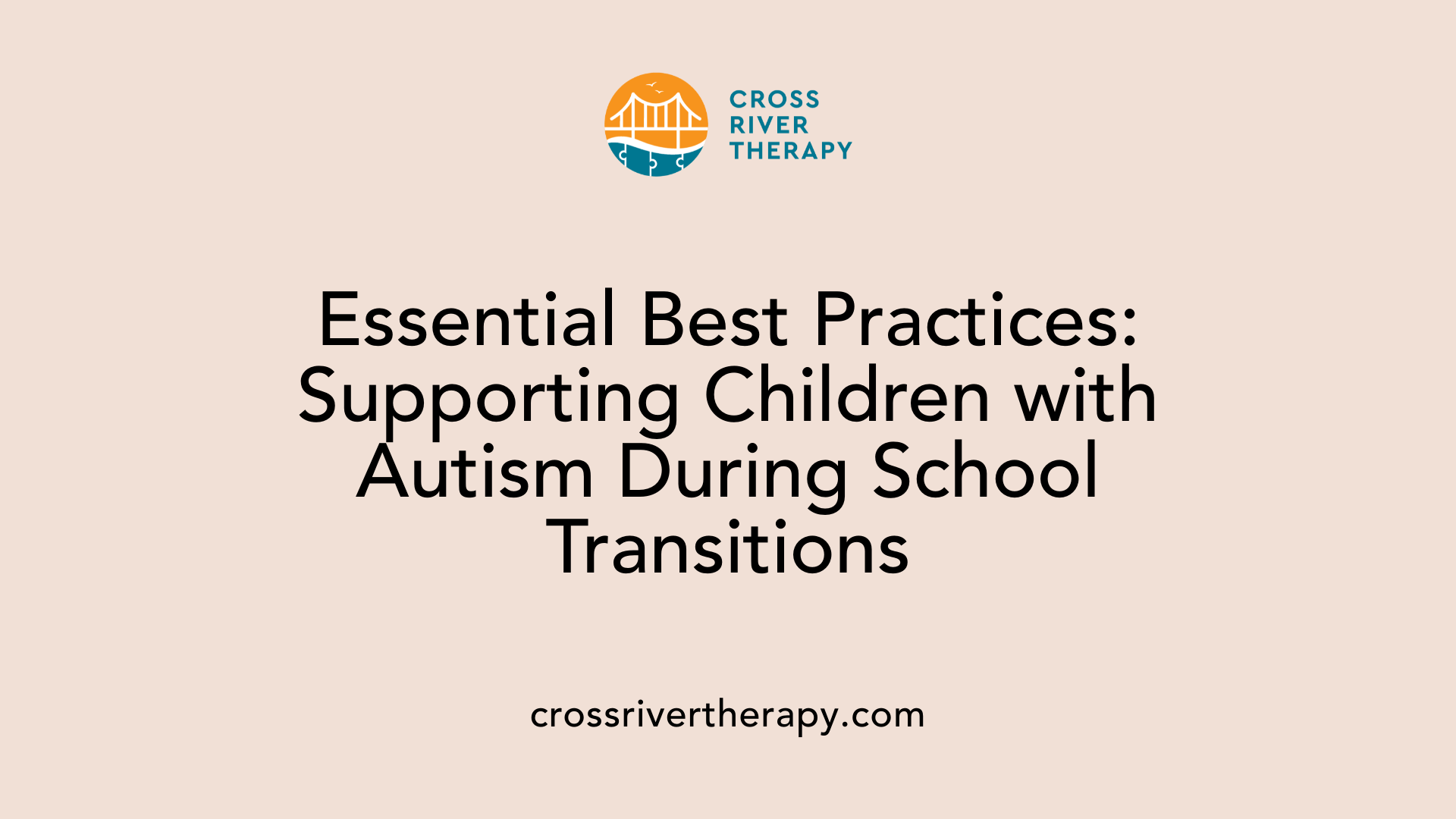
What are the best practices for supporting children with autism during significant transitions in a school environment?
Supporting children with autism during transitions in a school environment requires a multi-faceted approach. Here are some best practices:
Structured Routines: Implement predictable daily schedules to reduce uncertainty. Autistic children thrive on routine, and maintaining familiar patterns can greatly assist in easing anxiety during transitions.
Visual Supports: Use visual aids such as schedules, timers, or social stories to help prepare children for upcoming changes. Visuals can serve as important reminders that make transitions more tangible and understandable.
| Type of Support | Purpose | Examples |
|---|---|---|
| Structured Routines | Create predictability for daily activities | Daily class schedules |
| Visual Aids | Aid in comprehension of transitions | Visual schedules, timers |
| Transition Cards | Provide cues for moving between activities | Cards showing next activity |
| Social Stories | Prepare for new situations or environments | Books explaining classroom |
Collaboration among Team Members: Effective transition planning involves teachers, therapists, and parents. Regular meetings can ensure that everyone is on the same page regarding the child’s specific needs, fostering a supportive environment.
Advance Preparation: Familiarize children with their new settings by touring classrooms and meeting teachers before school starts. This proactive approach can significantly lessen anxiety. Discussing the school year in a positive light and outlining fun activities can also promote excitement.
Comfort Items: Allow the child to have calming tools or items from home that can provide comfort during stressful activities.
By employing these strategies, caregivers and educators can facilitate smoother transitions, ultimately supporting the child’s social, emotional, and academic development in the school setting.
Techniques for Smooth Transitions Using ABA
Applying ABA Techniques for Transitions
Applied Behavior Analysis (ABA) techniques are instrumental in facilitating smooth transitions for students with autism. These strategies are particularly essential for addressing the challenges posed by new environments and varying expectations.
Creating social stories tailored to the specific transition can help students visualize and prepare for upcoming changes. This approach minimizes anxiety by providing a narrative that guides them through what to expect.
Visual schedules serve as another effective tool. They cater to students’ needs for routine and predictability, outlining the day's events in a clear, accessible format.
Additionally, providing transition warnings through visual timers or cues ensures children are alerted before activity changes, helping them mentally shift gears.
Tools to Reduce Anxiety During Change
To aid students during transitions, positive reinforcement plays a key role. Rewarding compliance and appropriate behaviors encourages students to embrace changes confidently. Utilizing familiar objects or comforting items can further ease anxiety, serving as a transitional anchor.
Collaboration between ABA providers and educators is crucial. Developing a tailored transition plan creates an accommodating environment that recognizes each child's unique strengths and challenges, fostering a smoother adjustment process.
Ultimately, integrating structured strategies from ABA therapy significantly supports autistic students during their transitions, reducing stress, and enhancing their educational experiences.
| ABA Technique | Purpose | Benefits |
|---|---|---|
| Social Stories | Prepare students for transitions | Reduces anxiety by familiarizing them with expectations |
| Visual Schedules | Provide predictability in daily activities | Improves understanding and readiness for change |
| Transition Warnings | Alert students before changing activities | Helps mentally prepare them for shifts |
| Positive Reinforcement | Encourage compliance with transitions | Boosts confidence and willingness to engage |
| Familiar Objects or Comfort Items | Offer emotional support during change | Enhances feelings of safety and stability |
Managing Transition Challenges with ABA
Addressing Specific Transition-Related Difficulties
Transitioning from ABA therapy to a school setting presents unique challenges for children with autism. These challenges arise primarily from new environments and varying expectations. Research indicates that as much as 25% of a school day can be spent on transitions, which can be stressful for students who thrive on predictability. As children move between activities, they may experience anxiety and frustration if not adequately prepared.
To mitigate these difficulties, establishing a Transition Team is essential. This team collaborates to identify specific transition needs and patterns that may cause challenges, be it linked to time of day, activities, or individual educators. Developing SMART goals, which are incorporated into the child's Individualized Education Program (IEP), ensures that the transition strategies are tailored to each child’s unique circumstances.
Evidence of ABA Effectiveness in Managing Transitions
ABA therapy plays a crucial role in easing classroom transition challenges for children with autism. It utilizes individualized behavior interventions centered on skill-building and positive reinforcement. Studies highlight that ABA enhances social, communicative, and daily living skills among autistic children. This leads to improvements in adaptive behaviors, significantly reducing anxiety during transitions.
The recently introduced Schedules, Tools, and Activities for Transitions (STAT) program exemplifies the effectiveness of ABA in school settings. Through structured guidance, this program supports teachers in implementing essential transitional steps—providing warnings, engaging student attention, and reinforcing positive behaviors. While individual results may vary, many children demonstrated improved adaptive responses during transitions.
Overall, ABA therapy is recognized as an evidence-based best practice that not only helps children manage the stresses associated with transitions but also builds resilience, setting the foundation for seamless integration into the educational environment.
Developing Effective Transition Plans with ABA
How are frameworks and strategies for effective transition planning developed in educational settings using ABA therapy?
Frameworks and strategies for effective transition planning utilizing ABA therapy are crafted through a collective effort that brings together teachers, behavior analysts, and parents. This collaboration is vital for ensuring comprehensive support tailored to each child's specific needs.
Transition planning should kick off early, addressing developmental stages that children with autism may encounter. Each transition, whether small or significant, presents unique challenges for these individuals. Laws such as the Individuals with Disabilities Education Act (IDEA) and the Free Appropriate Public Education (FAPE) guidelines empower parents by clarifying their child’s rights and the resources available to support their educational journey.
To facilitate smoother transitions, practical strategies come into play. Visual schedules, countdown timers, and social stories can help develop necessary skills and promote understanding of what to expect in the school environment. ABA methodologies emphasize teaching essential life skills, effective communication, and techniques for managing stress, all of which contribute to fostering independence and achieving success in diverse settings. Regular monitoring and data collection are integral components of transition planning, allowing for modifications to ensure that the plans remain relevant and adapt to the child’s evolving requirements.
Collaborative roles in transition planning
Successful transition planning necessitates a well-rounded approach. Establishing a Transition Team is essential, composed of ABA providers, teachers, parents, and specialists who work together to identify specific transition needs. This team plays a crucial role in assessing potential challenges that might arise, considering factors such as the time of day, types of activities, and the environments students will navigate.
The development of SMART (Specific, Measurable, Achievable, Relevant, Time-bound) goals ensures that each child's Individualized Education Program (IEP) is informed by structured objectives that support their individual progress. Incorporating ABA strategies, such as increasing predictability through visual tools and integrating choices to alleviate anxiety, significantly improves the transition experience. The focus remains steadfast on ensuring that children not only integrate into school settings effectively but also develop skills crucial for navigating various social and learning environments.
The Transition from ABA Therapy to School
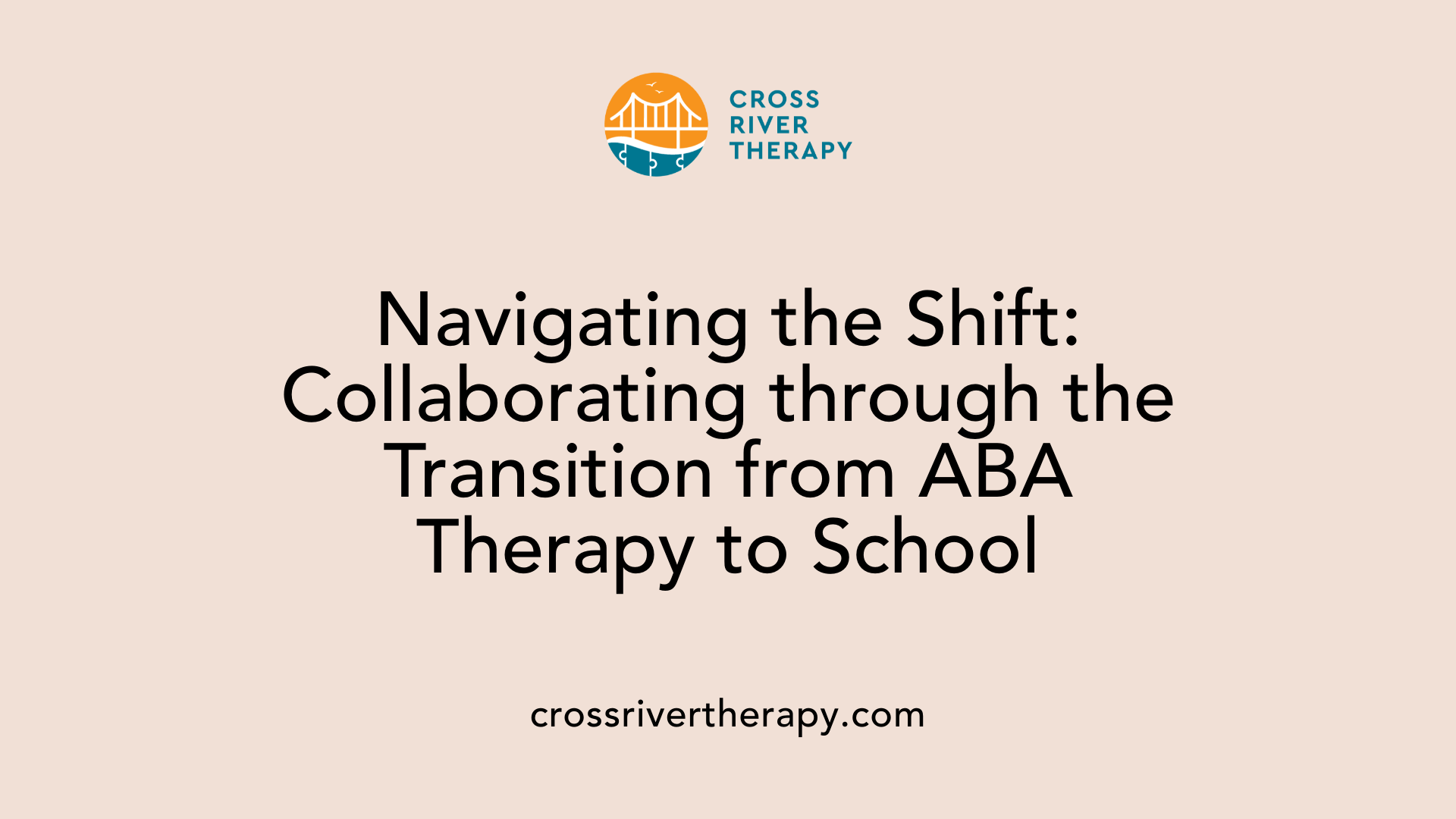
Challenges and Collaboration Needed During Transition
Transitioning from Applied Behavior Analysis (ABA) therapy to a school environment can be daunting for children with autism. New environments come with added expectations that may not match the structured support provided in ABA therapy. To ease this shift, collaboration between families, therapists, and school personnel is crucial.
Before the school year begins, it's beneficial to hold meetings with the child's ABA provider. This allows families to voice concerns, establish goals, and develop a tailored plan to address the child's unique needs during the transition. Familiarizing the child with their new school—by touring classrooms and meeting teachers—can also mitigate anxiety.
Differences in Curriculum and Support Systems
The curriculum in ABA therapy often differs from that in schools, which follow state standards. Thus, it's essential that ABA providers and school staff engage in ongoing communication about each child’s educational objectives. Transition plans should reflect this collaboration to ensure consistent support across settings.
Additionally, behavior support plans may need to be adjusted when shifting from one-on-one ABA therapy sessions to the group dynamics found in classroom settings. For many autistic students, navigating the multiple transitions that occur during a school day—up to 25% of their time—requires clear visual supports, predictability, and pre-established routines. Each aspect of the transition process should emphasize individualized planning to promote student success.
Visual Aids and Tools for Effective Transitions
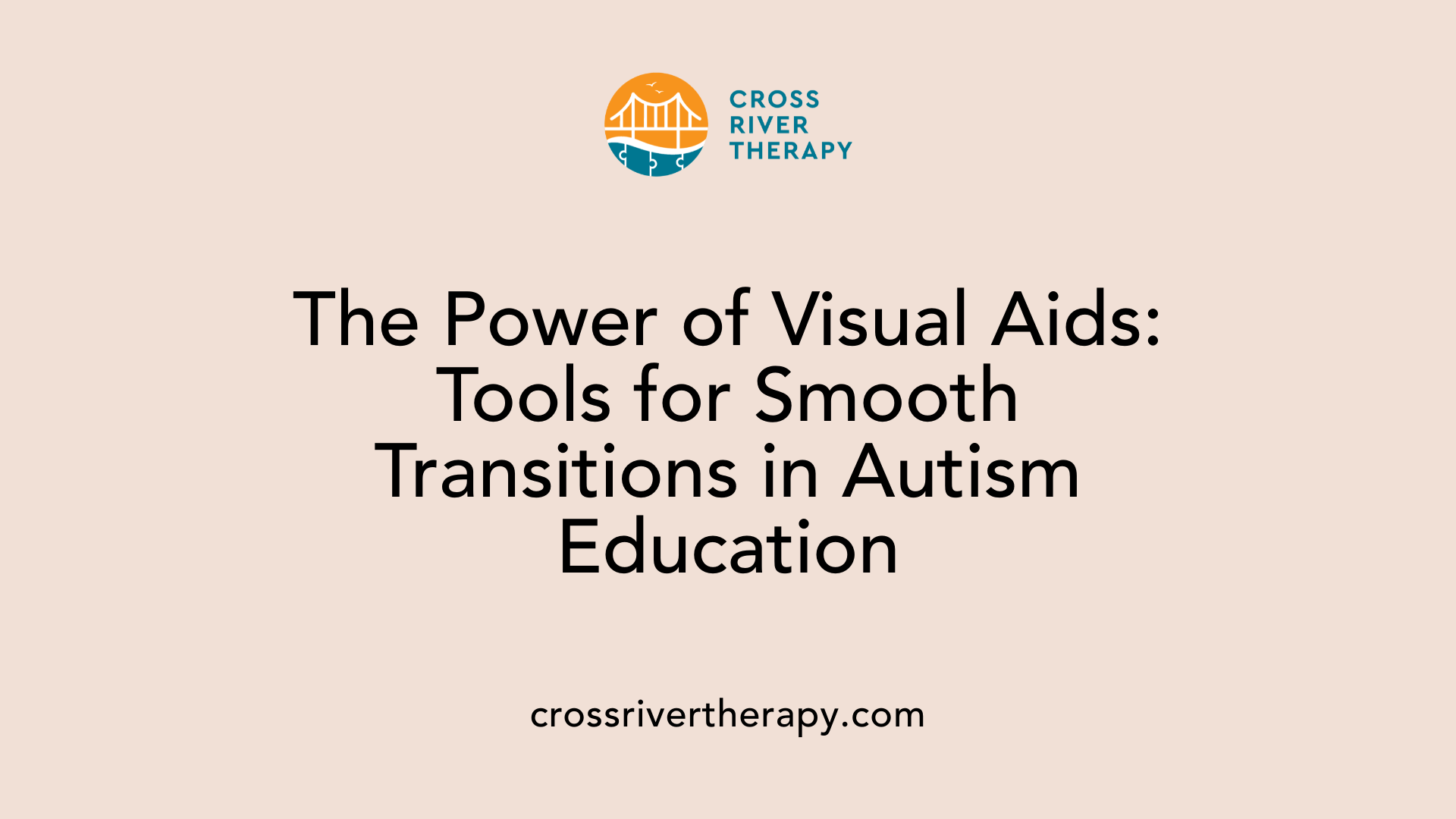
Using Visual Aids to Support Autism Transitions
Visual aids play a pivotal role in supporting children with autism during transitions. These aids, such as visual timers, countdowns, and schedules, can significantly help students understand what to expect next. The predictability they offer directly addresses the challenges faced by autistic students, who benefit from clear, visual signs rather than verbal instructions.
Effectiveness of Visual Aids Versus Verbal Prompts
Research has shown that visual prompts are often more effective than verbal ones for children with autism. This is because many students may struggle to process spoken instructions quickly, leading to confusion and stress. Keeping structural anticipations in place through visual aids enhances the child's confidence and reduces anxiety. Providing advanced warnings and preparing them for upcoming activities visually can foster a smoother transition, making the school day more manageable for these students.
The STAT Program: A Structured Approach
Elements of the STAT Program for Supporting Transitions
The Schedules, Tools, and Activities for Transitions (STAT) Program is a structured framework designed to assist teachers in implementing Applied Behavior Analysis (ABA) techniques during classroom transitions. This program outlines a series of procedural steps including:
- Providing Warnings: Giving students alerts about upcoming transitions to prepare them mentally.
- Gaining Student Attention: Utilizing strategies to focus students just before the transition begins.
- Reinforcing Appropriate Behaviors: Acknowledging and rewarding students who successfully navigate transitions without disruptions.
These elements aim to increase predictability and comfort during a time that can be particularly challenging for students with autism.
Teacher Feedback and Program Effectiveness
In a randomized control trial involving 150 students with autism and 57 teachers across three urban school districts, educators reported positive feedback regarding the STAT program’s implementation. Teachers found the procedural steps reasonable and noted a modest improvement in academic engagement among students during transitions. This indicates the effectiveness of structured transition strategies while also highlighting the importance of continued collaboration between ABA providers and school personnel to adapt these methods to individual classroom needs.
Micro and Macro Transitions in School Settings
Understanding Micro Versus Macro Transitions
In the context of school settings, transitions can be categorized into micro and macro transitions. Micro transitions refer to the daily shifts between activities, such as moving from lessons to lunchtime. These small yet frequent changes can be significant, especially for students with autism, who may thrive under predictable routines. In contrast, macro transitions involve more considerable changes, like starting school or moving between grades. These transitions tend to carry higher stakes and often necessitate more extensive preparation.
Strategies for Significant School Transitions
Successful macro transitions require detailed planning and support strategies. Here are effective techniques to facilitate these changes:
- Welcome Materials: Provide books or DVDs that introduce the new environment, easing anxiety.
- Routine Practice: Prior to the transition, practice new routines with the child to increase familiarity.
- Team Collaboration: Establish a Transition Team comprising ABA providers and school staff to create individualized transition plans.
Utilizing these strategies ensures that students transition more comfortably, allowing them to adapt to their new settings with confidence.
Conclusion: The Path to Successful Transitions
Effective classroom transitions are imperative for the academic and social success of children with autism. ABA therapy plays a pivotal role in easing these transitions by offering tailored strategies and support that cater to the unique needs of each child. Through collaborative planning, the use of visual aids, and the implementation of structured programs like STAT, educators and therapists can create environments that foster success and facilitate smoother transitions. As more children with autism are included in general education classrooms, the importance of these ABA-supported strategies becomes even more critical, underscoring the role of ABA therapy in shaping a more inclusive and supportive educational landscape.
References
- How to Successfully Transition From ABA Therapy to School
- Transition strategies for autistic students - LeafWing Center
- [PDF] Transitions ABA in the Classroom - SharpSchool
- Implementing a Manualized, Classroom Transition Intervention
- Transitioning from ABA Programs to School Programs
- Prevent Meltdowns By Transitioning Effectively With These 4 ABA Tips
- Transition Time: Helping Individuals on the Autism Spectrum Move ...
- The Role of ABA Therapy in Supporting Child with Autism During ...
- Transition strategies for autistic students - LeafWing Center



